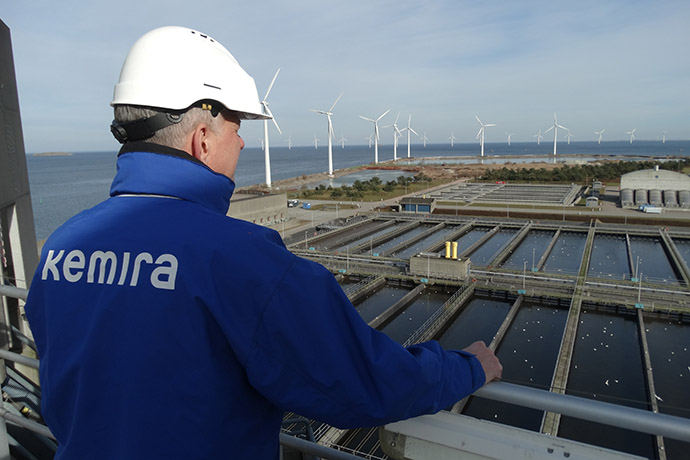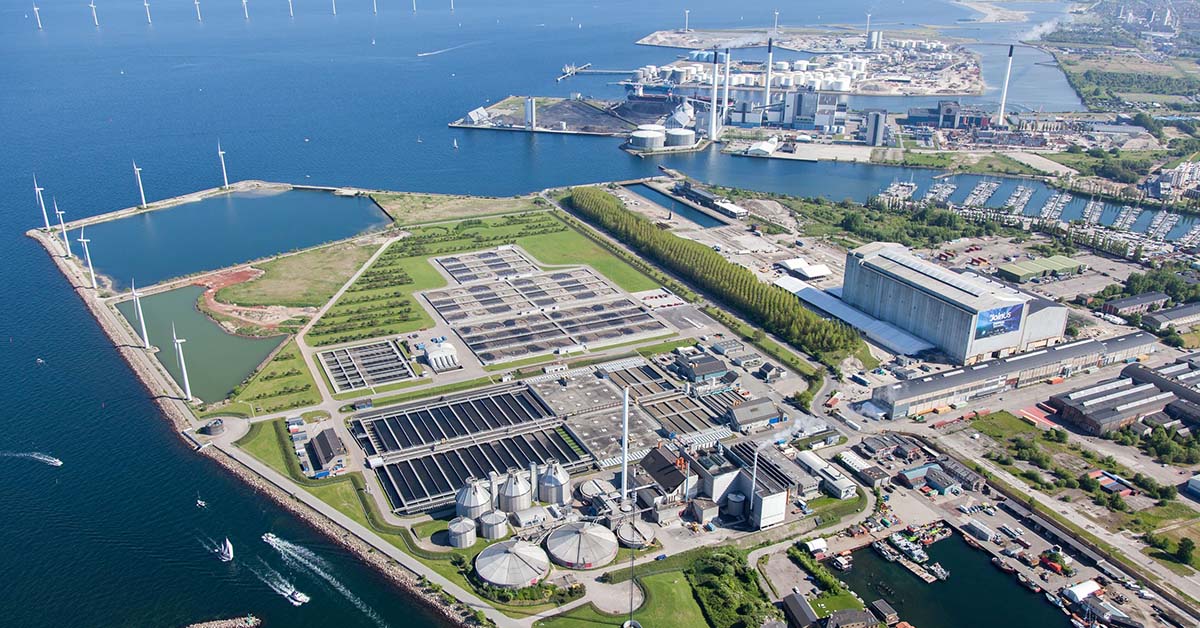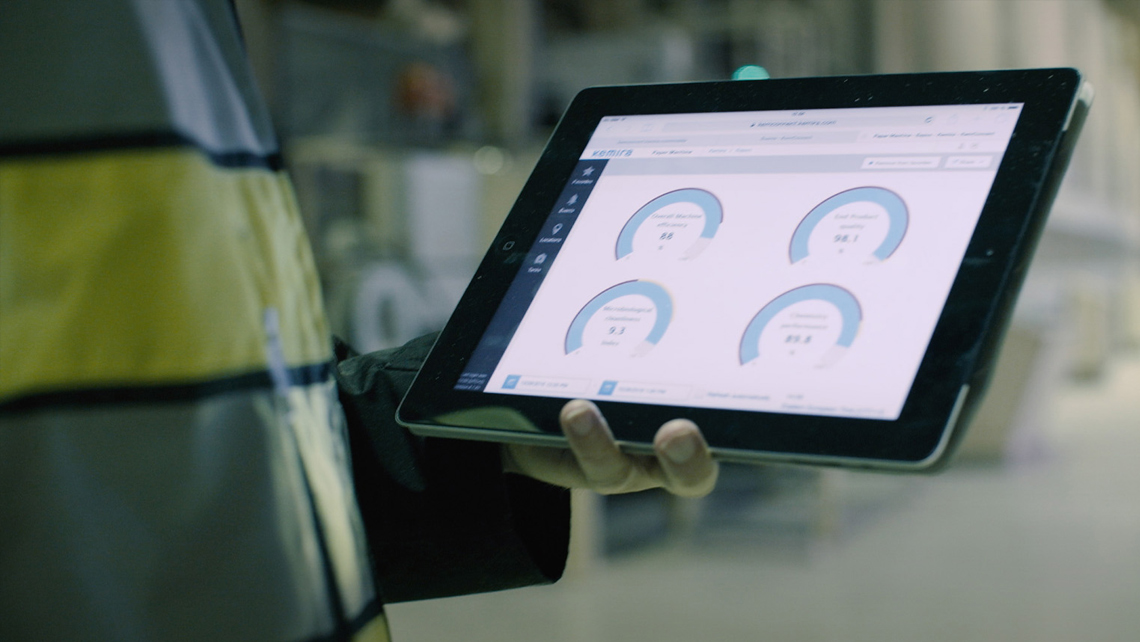Dines Thornberg has been working in wastewater treatment for more than 35 years. A self-proclaimed “wastewater nerd”, he is currently the head of R&D at BIOFOS, the utility that manages wastewater for the city of Copenhagen in Denmark and its neighboring communities.
BIOFOS treats the wastewater of 1.2 million people with three wastewater treatment plants (WWTPs) in Lynetten, Avedøre and Damhusåen. The utility is lucky to have Dines and a handful of dedicated researchers whose innovative initiatives keep BIOFOS’s plants two steps ahead when it comes to sustainability.
“We want to do more than treat the water which we are obliged to treat by law. We want to be energy and climate positive,” he explains.
More than water management
BIOFOS’s efforts to become more environmentally friendly are oriented around the United Nations Sustainable Development Goals (SDGs), especially the goals related to water, as well as SDG 7 (Affordable and Clean Energy), SDG 12 (Responsible Production and Consumption) and SDG 13 (Climate Action).
As such, Dines and the team have been studying BIOFOS’s carbon footprint in the broadest sense. They have evaluated their greenhouse gas emissions and their use of fossil-based energy sources. Their analysis led to an interesting conclusion: to move the needle on BIOFOS’s overall carbon footprint, they must tackle something that has nothing to do with carbon at all.
We want to do more than treat the water which we are obliged to treat by law. We want to be energy and climate positive.
Reducing emissions beyond CO2
Dines says that BIOFOS’s biggest concern when it comes to climate impact is nitrous oxide, a greenhouse gas with global warming potential about 275 times that of CO2. Nitrous oxide, or N2O, lingers in the atmosphere for roughly 100 years, making it extremely potent.
“By focusing on N2O, we will make a much bigger dent in our overall environmental footprint, bringing us closer to our goal of carbon neutrality and, ultimately, becoming climate positive,” Dines explains.
To reduce N2O emissions, the utility has investigated full-scale solutions. They have changed aeration levels by adjusting the dissolved oxygen setpoint. They also started varying the number of bacteria working to degrade organic compounds. Finally, they changed their sludge concentration by adding chemicals, ethanol or glycogen, or a carbon source. Taken together, these adjustments are curbing emissions. As a next possible step, Dines says their team is considering carbon capture technology.
But emissions are only part of the story. BIOFOS is also taking a hard look at energy use. The company today is already energy positive, meaning they are a net contributor to the grid. But they are still looking for possible improvements in their energy balance.
Each unit of energy counts
Since BIOFOS is situated in Denmark, you would be right to assume that they use relatively few fossil fuels to power their current operations. Indeed, Dines says, “Fossil-based energy used to be the biggest contribution to our CO2-footprint. But then Denmark switched to 50% renewable energy, mostly in the form of wind power.”
That alone drastically improved the utility’s energy mix and overall environmental footprint. However, he points out, it’s now harder to make sweeping improvements when it comes to energy. So Dines devotes more time to energy efficiency, targeting incremental improvements. He recalls one particularly stubborn issue that was too slippery to handle alone – greases and fats.
“Fats kept popping up in the wrong places and continuing downstream,” Dines explains. “It led to an accumulation problem. The fat accumulated in the primary clarifiers and started to smell. Fats were also coating sensors and machines.”
The issue slowed everything down ─ not very efficient, which means not very sustainable. BIOFOS turned to Kemira sales manager Jesper Berner for a chemical solution. After a successful collaboration, they began exploring other solutions in support of BIOFOS’s broader sustainability ambitions, including optimizing biogas output through better sludge management.

Kemira sales manager Jesper Berner overlooking the Lynetten wastewater treatment plant in Copenhagen, Denmark.
From by-product to biogas
Like many other WWTPs, BIOFOS has found that the sludge they generate is an ideal energy source for climate-friendly electricity, biogas, and heating for the grid. Here, Kemira’s chemistry and applications expertise has also helped BIOFOS tremendously.
The utility began working with Kemira on sludge management in 2019. They implemented pre-precipitation to take more sludge out in the primary step and send more to the digestors. Not only did this help BIOFOS produce more biogas, it meant they could treat smaller loads in the secondary step.
“That is making us greener and helping with our climate efforts. It saves energy downstream. As an added benefit, it indirectly reduces costs,” Dines says.
At Kemira, we also think it’s a great example of circular economy in action. BIOFOS has turned a waste stream into valuable energy for their local community.
Extending the life of assets
Another principle of the circular economy is extending the useful life of resources and materials. Kemira is helping BIOFOS squeeze more capacity out of their current facilities, which are straining to keep up in recent years due, in part, to increased stormwater.
“If we had to build for more capacity right now, it would be very expensive. We can have an intermediate period thanks to Kemira’s KemConnect™,” Dines explains.
KemConnect™ is a smart water management solution that combines a robust digital platform with Kemira’s world-class chemistry for efficient and reliable optimization. Our algorithm doses the exact amount of coagulants required for chemical phosphate removal even under changing process conditions.
And conditions do change quite dramatically in Copenhagen. “The load of raw wastewater coming from the city is much higher in the daytime than at night. It also varies throughout the week and with the seasons. Chemical dosing is an important control,” Dines explains. With KemConnect™, he hopes to stabilize and optimize their processes while using chemicals more efficiently. The KemConnect applications are constantly further developed, and BIOFOS is a valuable partner for Kemira in this development work.
BIOFOS is also working toward a 48-hour WWTP flow forecast, and better real-time stormwater control, as part of an EU Horizon 2020 project called digital-water.city.
It’s an understatement to say that wastewater treatment has changed considerably since Dines began working in the business more than 35 years ago. And yet, in many ways, it hasn’t modernized enough. Even though Dines and his team may not have all the answers right now, they continue to foster change by asking the right questions and picking the right partners. “We support the UN SDG 17 regarding partnerships,” he emphasizes.
Problem-solving together
At Kemira, we like to approach every customer in the spirit of partnership too. Utilities like BIOFOS often seek out our help for difficult chemistry-related issues, but they turn to us time and time again because of our transparent approach and hands-on support.
Dines compliments Jesper for this partnership “I have been working with Jesper for many years. He doesn’t push us to use something we don’t need. I consider him to be one of the most straightforward and honest people in the business,” he says.
No matter where Dines’ research leads him next, the team at Kemira is prepared with knowledge, solutions and a collaborative spirit. Our goal is to help municipal utilities like BIOFOS adapt wastewater treatment so it’s fit-for-purpose and ready for the net-zero world and circular economy.

